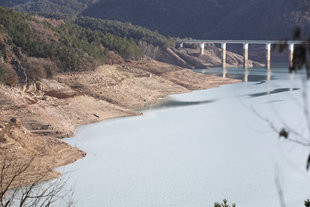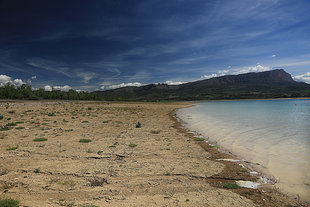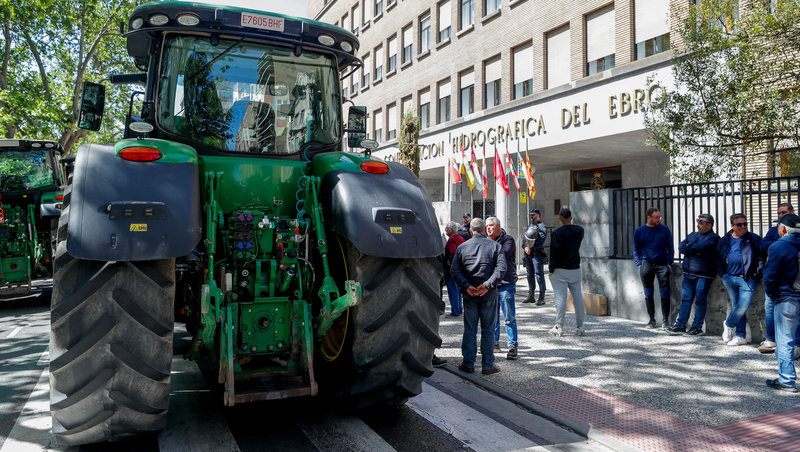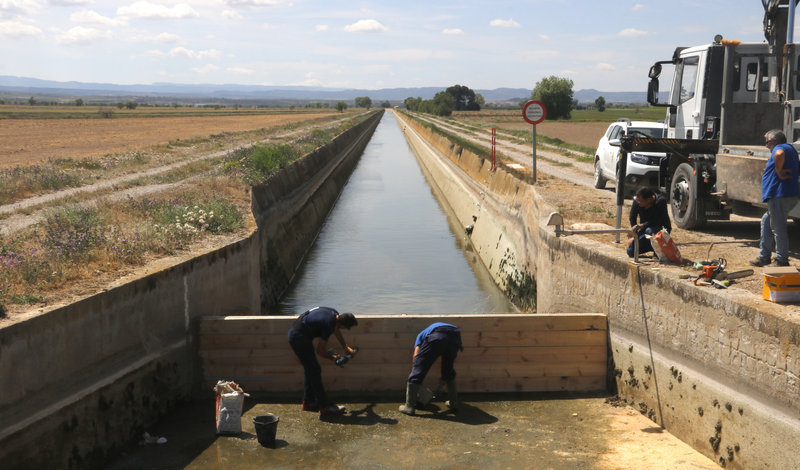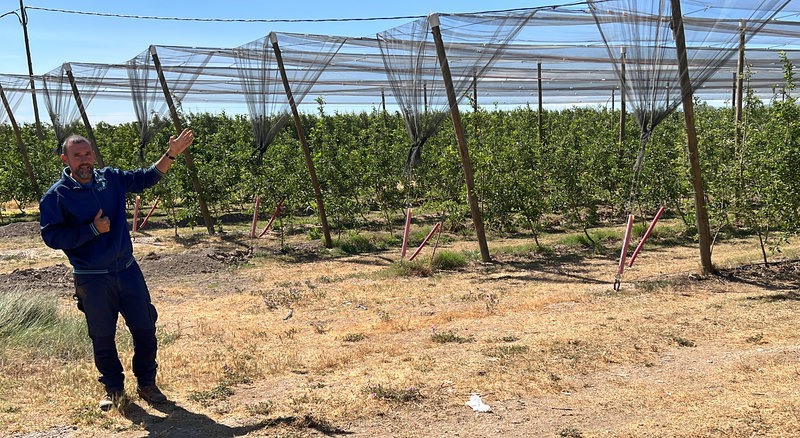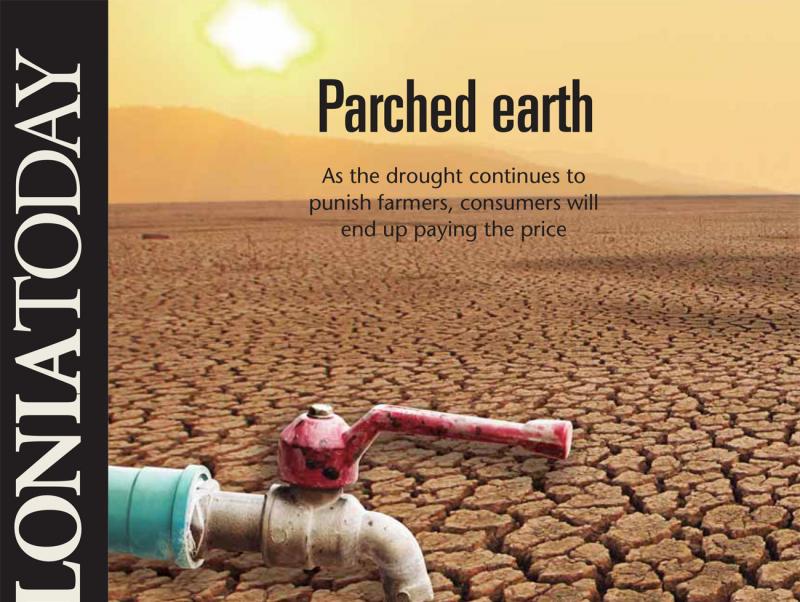Dry land
The historic drought Catalonia is currently suffering will cause millions in losses in the Catalan countryside and end up having a direct and significant impact on the wallets of consumers when they go shopping
“The Ebre hasn’t been managed well. We have been asking for figures since October”
Some figures talk of up to 1.2 billion euros in losses resulting from harvesting crops it will not be possible to sell
Catalonia imports 60% of its food, and of the remaining 40%, more than half (57%) comes from the region of Lleida
The situation in the Catalan countryside is dramatic. No less than 80% of the rainfed cereal harvest (mainly wheat, barley and oats), almost half of the irrigated crops (maize and rice) and 60% of the fodder intended for livestock has been lost. The next olive oil season is also at risk, and if it doesn’t rain soon, things could be as bad as last year, when 75% of the olive harvest was lost. Meanwhile, fruit yields are expected to be 70% lower than in 2022, with a predicted loss of more than 800,000 tonnes, mainly pears, apples and peaches. The above data provided by the association of Young Farmers and Ranchers of Catalonia (JARC) and the Fruit Business Association of Catalonia (Afrucat) reveal the extent of the crisis facing the Catalan countryside as a result of the drought.
Neither the Department of Climate Action, Food and Rural Agenda of the Catalan government nor Agroseguro (the company in charge of managing insurance for the countryside) have so far dared to quantify the losses. Nevertheless, the first estimates of the compensation that insurers will have to pay out to farmers because of the drought are already record-breaking: a minimum of 43 million euros in claims submitted for the loss of 110,000 hectares of oats, wheat and barley out of the 130,000 hectares that are insured. Of this 43 million, 25 million correspond to the region of Lleida. At the same time, there is a good part of the harvest that is not insured, while in the case of those crops that are insured, many policies only cover contingencies such as fire or hail damage, but not the lack of water.
While it will be hard to assess the full economic impact of the tragedy until all the harvests are over, the figures put forward by some agricultural organisations talk of up to 1.2 billion euros in losses resulting from harvesting crops that will not be able to be sold. In the specific case of sweet fruit, for example, JARC values the harvest derived from the 12,000 hectares that depend on the Urgell canal at 250 million euros. The area irrigated by the canal alone produces 55% of Catalonia’s apples and pears.
Carles Vicente, head of organisation at the Union of Farmers, distinguishes between two crises resulting from drought that overlap: “On the one hand, the one that affects rainfed crops and 70% of the cultivated area in Catalonia, something we have become used to. And, on the other, a new crisis, which is that of irrigation.” The problem, according to Vicente, is that in the latter case “there are no tools, which leaves us completely vulnerable”. What is also regrettable, he adds, is that poor government planning means there was no time to prepare, which could have “minimised the impact”.
All more expensive
Apart from the huge losses, many representatives of the agricultural sector warn that the future of many farms is also at risk. Vicente stresses that “although the predominant companies in our country are family-owned, in many cases investments have been made and so this crisis could cause more than one to close down.”
Yet the impact may also be felt by larger companies. Recently, representatives of the fruit sector employers’ association, Afrucat, met with the UGT trade union and announced the possibility of initiating widespread temporary lay-offs due to the drastic drop in fruit production. Catalan employers estimate that the drought could affect between 10,000 and 15,000 workers out of the 40,000 jobs that the sector currently generates. Afrucat’s general manager, Manel Simon, also said that temporary lay-offs will not be enough and he argues that the sector needs aid, while the UGT demanded a “shock plan to save trees and jobs”.
The drama experienced in the countryside will inevitably end up affecting us all. Catalonia imports about 60% of the food it consumes, and of the remaining 40%, more than half (57%) comes from the region of Lleida alone. Sergi Balué, from the sweet fruit sector of the Young Farmers and Ranchers of Catalonia, is very clear: “The impact of the drought will be countrywide: it may end up changing the structure of how we do things.”
First of all, it will have an impact in the countryside, with a rise in unemployment and a drastic reduction in exports, but it will also end up having an impact on the consumer, with prices likely to rise significantly.
Martí Costal, head of JARC’s water sector, sums up the scenario: “If we have to import more food, we will have to pay a price. On the one hand, we will lose food sovereignty and will have to depend more on other countries. And, in addition, it will have an impact on the environment, with a larger CO2 footprint and no guarantees we will be able to comply with EU environmental, labour and health regulations.”
So far, the prices of legumes, vegetables, tubers, olives and sweet fruit have already risen by more than 16% and they will likely continue to rise. Faced with this scenario, the farmers’ representatives call for the need to prioritise the primary sector when making decisions about how to deal with the lack of water: “We can do without many things, but not food and drink. Agriculture and livestock are essential for obtaining quality local food,” warns Costal, who adds that it will be necessary to prioritise production, because it is of primary necessity, although other aspects must also be taken into account, such as guaranteeing good maintenance of the land, the economic fabric, the management of the environment and avoiding fires.
“They have abandoned us”
Farmers have been demanding measures from the authorities for months, and they complain about the slowness and insufficiency of those measures that have been taken so far.
“The authorities have not reacted. The aid they have announced is only for certain sectors, when in reality we are facing a crisis across the board, affecting everyone from beekeepers – who have harvested 40% less honey than last year – to rice farmers – who will get 50% less rice this year. All this will end up having a direct impact on the consumer,” warns Costal.
The JARC official also demands that guarantees be provided to farmers: “The authorities provide no security to people, in the sense of guaranteeing that they will not let them down. In the case of fruit farmers, for example, they are waiting to hear whether to sacrifice the fruit harvest and so save the trees, with all that entails. People are very distressed, but the authorities say nothing. They have abandoned us.”
The farmers do not know what water they will have available. In April, for the first time in its 161-year history, the Urgell canal, which supplies 120,000 people with water and irrigates 70,000 hectares of farmland, was closed. Since then, the only water allowed to circulate is to supply the municipalities and to prevent fruit trees from dying. This has led anxious farmers to resort to desperate means, including opening new wells or picking fruit or harvesting cereals early. The rest pray that the rain forecast by meteorologists will save their harvests.
One of the main complaints of agricultural organisations is a lack of adequate planning, especially in terms of water management. This has led to such actions as a protest march last month of around 40 tractors and 200 people from Urgell and other areas of La Plana to Lleida, or another from Batea (Terra Alta) and the counties of Terres de l’Ebre that saw farmers gather in front of the headquarters of the Ebro Hydrographic Confederation (CHE) in Zaragoza.
Yet farmer’s union head Vicente differentiates between the management of the internal river basins, in the hands of the Catalan authorities, and those of the River Ebre, which is under the management of the CHE. “The Ebre has not been managed correctly. We have been asking for figures since October. There is not much transparency,” he complains.
The unions are demanding tougher and more urgent measures, especially from Spain’s state government. In Vicente’s opinion, the state aid announced so far has merely “disappointed” farmers. “In addition, the aid measures were announced for the whole state, mainly for the Guadalquivir and Guadiana areas, and not for Catalonia specifically. Apart from that, they are clearly insufficient, since they foresee 250 million euros in aid that must be distributed throughout the state and which, therefore, will have a very limited impact on certain sectors and regions, such as that of Catalonia,” he adds.
A complicated future
In fact, the representatives of the different agricultural unions all complain that just about nothing has been done by the authorities since 2008, when the last major drought was experienced.
“We should have been working on alternatives years ago so that we don’t have to depend on looking to the sky. We just haven’t adapted,” says Costal. At that time, it finally rained a lot in late spring but this year the forecasts are not so good, and both the state and Catalan meteorological agencies, Aemet and Meteocat, say that they do not expect enough rain this year for the reservoirs to recover so that we can leave the emergency situation behind.
Neanwhile, JARC has made a series of proposals aimed at helping the agricultural sector adapt to the new reality of more frequent and persistent droughts that the climatologists have been announcing for some time. Among these proposals is the improvement of information mechanisms. Sergi Balué, head of JARC’s sweet fruit sector, calls for “improving information on water reserves in order to be able to make the right decisions”. In fact, fruit producers currently find themselves in a difficult dilemma: either they have to throw away the fruit in order to ensure the survival of the trees, or they decide to go ahead and risk their trees dying.
“There’s only enough water to irrigate once more from the Urgell canal. If we can’t water them, then the survival of the trees will be difficult. And on top of that it will be very difficult that the trees will be able to bear fruit next year,” says Balué.
JARC says it has sent a series of proposals to the Catalan government calling for such measures as a more equitable distribution of water, activating a line of subsidised loans for producers from the Catalan Institute of Finance, direct aid for losses, and analysing the specific application requirements for each sector, giving priority to the most urgent depending on their situation.
Meanwhile, the Union of Farmers has also made similar proposals, and in a recent meeting it held with the Secretary General of Spain’s Ministry of Agriculture at the sub-delegation of the State Government in Lleida, the union called for the combination of direct aid and for more flexibility for farmers affected by the drought in the regulations for applying for direct aid of the Common Agricultural Policy and rural development under the European Regional Development Fund (ERDF).
“There’s a lack of desalination plants, so as to increase the volume of regenerated water, as well as aid so that farmers can invest in more efficient irrigation systems as well as anti-leakage systems on farms. The modernisation of irrigation has been postponed for far too long, and more money needs to be invested in the research and technologies for making water resources more efficient,” concludes the JARC official.
feature drought
feature drought
feature drought
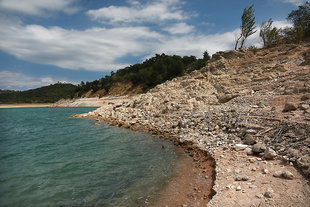
THE STATE OF THE RESERVOIRS THE STATE OF THE RESERVOIRS THE STATE OF THE RESERVOIRS
